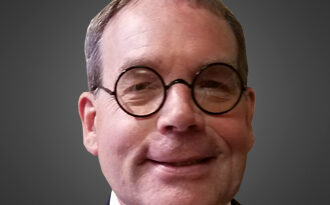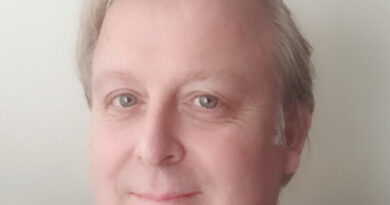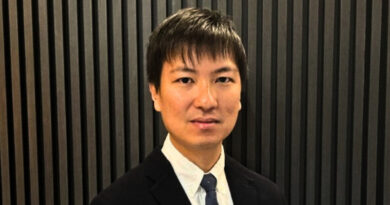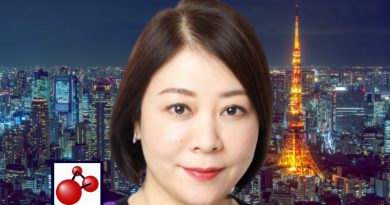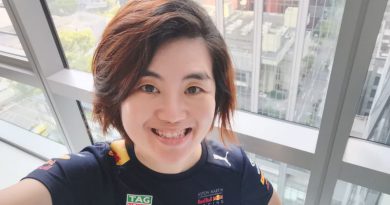Ian Seow: “Always retain and prioritise flexibility”
Ex-Quantedge PM Ian Seow shares his thoughts on managing an investment fund and an investment business ahead of the launch of his Trinity Macro Fund.
Ian Seow, formerly Head of Trading at Quantedge Capital, has moved on and is now ready to launch the Trinity Macro Fund. He has teamed up with Soon Hock Chua at Asia Genesis Asset Management to launch the new fund. Ian previously worked at Asia Genesis between 2008 and 2011. After completing his education at Carnegie Mellon University and Princeton University, Ian started his career at the Government of Singapore Investment Corporation and also worked as a Senior Portfolio Manager at Pilgrim Partners Asset Management. Ahead of the fund launch, Hedge Funds Club’s Stefan Nilsson recently met Ian in Singapore to find out more about his plans.
Tell us about the Trinity Macro Fund investment strategy.
I launched the Trinity Macro Fund with the purpose of offering investors a product with three characteristics: 1. High liquidity – monthly dealing with no lockups nor penalties, 2. Attractive long-term compounding – meaningful double-digit yearly returns, and 3. Downside protection – little correlation to market beta. To achieve this, I run multiple strategies in the portfolio, each with a different time horizon: long term, medium term and short term. My long-term strategies extract risk premia from the markets and employ dynamic asset allocation along with constant risk targeting. This is similar to what I used to do at Quantedge, the key difference being that this same strategy is implemented on a liquid futures-only portfolio. This allows the portfolio to be highly manoeuvrable, allowing me to attain the goal of high liquidity. My medium-term strategies are defensive in nature and are designed to deal with extended periods of broad market underperformance. This includes trend-following strategies that go either long or short (complementing a predominantly long-only risk premia strategy) and other relative-value strategies that do not depend on the direction of market beta. My short-term strategy is essentially a long-volatility strategy. This is an automated intraday trading model running 24 hours a day, hedging against sharp market moves both on the downside and upside. This system is anti-correlated with the long-term risk premia strategy and outperforms during sharp market declines. Over the course of my investment career, I have noticed that the infusion of liquidity into the system by central banks globally since the global financial crisis has gradually transformed the markets. This phenomenon has far-reaching consequences, beyond merely creating historic highs in traditional measures of money supply and liquidity. The accumulated stockpile of liquidity has necessitated a huger refinancing system to support capital markets and this new collateral-based mechanism is fraught with fragility. Furthermore, the excess liquidity has led to the rise of inflation, astronomical stock valuations, and the popularity of alternative assets such as crypto/NFT and SPACs. It has also temporarily distorted the markets from their fundamental value in the medium and short-term horizons. We have been witnessing sharp liquidity-driven moves both on the upside and downside in the markets with increasing frequency (think meme stocks short squeezes, LME Nickel, mini-flash crashes) only for these moves to reverse course shortly after. While there are extensive academic studies on the various forms of risk premia, showing them to be robust over centuries of human history, I think the challenge today is to be able to hedge this time-tested risk premia harvesting strategy against these medium and short-term market corrections so that the strategy is able to stay the course and reap the long-term benefits of risk premia extraction. Trinity combines risk premia harvesting with relevant medium and short-term defensive strategies in order to mitigate the drawdowns. This has the effect of making the overall portfolio more robust and less correlated to market beta.
You most recently spent a decade at Quantedge, one of Singapore’s biggest and best-known hedge funds. You also have past experience from Pilgrim Partners and Asia Genesis as well as the Government of Singapore Investment Corporation. Do you feel that having such distinguished names from the investment industry on your CV is helping you now that you are launching Trinity?
Absolutely. I was surprised at the level of interest that I received in my product given that we were very low-key. I served a one-year non-compete agreement with Quantedge which expired in August 2022. Despite not conducting any marketing or publicity for a year, when I announced my intention to launch Trinity, a group of investors heard about it and contacted me immediately. This interest fed on itself and the number of inquiries grew. Some investors are even putting their names down for our initial offering period in October. I had not expected this at all since I was originally projecting investor interest in December, after a three-month track record. I think this is partly due to the network effect, partly due to the unique nature of my strategy and partly because I have been doing quantitative investing for a long time. Clients know that they can expect an investment product that is run with the same exacting standards of quality and professionalism, as it was with my previous firms. My ex-boss and colleagues at GIC have also kindly connected me to institutional clients with mandates allowing them to invest in hedge funds in the various stages of their business life cycle. So far, I have met with four of them and we have discussed the possibility of developing a separate product geared toward institutional needs in the future. I have also kept in touch with various fund service providers and brokers, many of whom I had known and worked with for more than 12 years. They are familiar with me personally, my investment style and requirements, so coordinating the fund set-up for Trinity has been relatively smooth.
You have recently returned to Asia Genesis Asset Management. Why did you decide to partner up with your old boss Soon Hock Chua to launch your new fund?
This was due to a fortuitous meeting I had with Soon Hock in late 2021. Back then, I had intended to work with a fund platform to launch my fund and had several meetings lined up with the major platform providers in Singapore. I ran into Soon Hock while having coffee in Great World City and we reconnected for the first time in many years. I informed him that I had left my previous firm and was planning to start a fund of my own. We started discussing various finance-related topics such as investing philosophy, quantitative versus discretionary investing and market themes and outlook. That two-hour-long coffee session ended up with me showing him the work I had done so far in my personal brokerage account in terms of API trading, automating the risk premia strategy and the 24/7 intraday hedging strategy. He looked at my trading history and liked the type of trades I was putting on and told me that he would like me to manage his money. He wanted to transfer one million dollars into my brokerage account for a start, to co-invest alongside the rest of the funds (my entire liquid net worth) I had earmarked for deployment on January 2022. I declined and told him that I did not have any intention or capacity to manage investors and would only be taking in external capital after the fund launch in Q3 2022. He was undeterred and we had several meetings following the initial one. Eventually, he convinced me to give up my fund platform idea and to use his fund management company to launch Trinity instead. This would save a lot of time in bringing my idea to market. He also offered to work closely with me to further refine and improve my intraday trading algorithms. Eventually, we settled on a partnership agreement whereby he would provide some seed capital and connect me with his client network, in exchange for revenue share. This arrangement would allow me to focus on my strategy and to leave other non-investment-related activities such as marketing and operations to his management company. I agreed and that was how we started collaborating. I also took on his investment into my brokerage account and I’m returning it to him now after 9 months of running the strategy with a 21% rate of return.
You are utilising Singapore’s VCC structure for the fund. What made you go for this relatively new structure?
There are operational and cost efficiencies in doing so since our firm is based in Singapore. Also, Singapore’s resilient banking sector, effective regulation and pro-investment policies give us peace of mind with regard to regulatory risks. According to a McKinsey study, the Asia Pacific region now accounts for around 42% of global wealth. Asia-Pacific remains one of the fastest growing regions for wealth and is primed to host almost a quarter of all UHNWIs by 2025, 17% more than what the region had a decade ago. As Singapore continues to attract capital inflows from the affluent in the region, this VCC structure will become increasingly popular and will be a credible alternative to the Cayman structure.
The launch of Trinity comes amid a tough period for risk-parity funds due to recession fears and rising global inflation. How well is the Trinity team prepared to deal with whatever obstacles will appear along the way?
Our long-term investment strategy (i.e. risk premia harvesting with dynamic asset allocation and constant risk targeting) is well-placed to handle rising global inflation. Unlike other risk parity funds which target constant portfolio exposure to major asset classes, we recalibrate and tilt our investment allocation daily based on the prevailing relative attractiveness. For instance, during a high inflationary regime, commodities tend to outperform relative to bonds and the underlying returns distribution of the asset classes is different as compared to a low inflationary regime. While we do not attempt to predict where markets are headed next, we collect a lot of data daily that give us a good idea of the current probability distributions and this allows the system to automatically tilt the investment weights in response to broad macroeconomic developments in the market. Analogous to the auto-pilot navigation system, our model automatically course corrects based on current market data. This flexible approach helps our portfolio to perform well in the face of rising inflation. We favour the above approach instead of placing large predictive bets on the future states of the economy. While well-researched Investment ideas may be 100% correct on the fundamentals, they could well be wrong with regard to investment timing, especially with the distorting effects of liquidity in the system. Furthermore, successful market calls are usually not easily repeatable, thus appropriate investment sizing becomes an issue in the long term. In a recessionary environment, our medium-term models outperform due to the defensive measures that are put in place. The downside to having such an approach is that portfolio gains during a strong bull market will generally underperform pure risk premia strategies. We think that this is a reasonable trade-off. The majority of the gains I’ve seen this year in my portfolio is attributable to these defensive models.
Lock-up periods are always a topic of debate when it comes to new funds. Some fund managers have moved to lock up investors for longer periods. What is your take on liquidity for fund investors?
I think life consists of a series of trade-offs and there is no single correct answer that applies to all investors. At the heart of this debate is the illiquidity risk premia. Economic theory tells us that illiquid alternative assets demand a higher risk premium and thus command higher expected returns. We have seen this to be generally true over the very long run, when we consider instruments across the liquidity spectrum: from liquid exchange-traded futures to OTC derivatives (e.g. credit, mortgage and municipal swaps) to real estate and private equity. The trade-off for higher returns is that these illiquid assets cannot be readily monetised at short notice without incurring hefty transaction penalties. Consequently, funds that rely on this form of risk premia as a source of return would need to impose investor lock-ups. This is to ensure that ill-timed redemption requests do not jeopardise the overall portfolio by forcing the manager to liquidate at a time of market distress, which would then create a negative feedback loop, severely impacting the rest of the portfolio and forcing more liquidation and redemptions. Personally, I would rather forgo the higher returns in exchange for flexibility. My views are shaped by my experience working with Soon Hock early on in my career. I joined him at the thick of the financial meltdown in 2008 and witnessed how he hedged the JMF portfolio in the face of sharp market drawdowns. A major takeaway from my time with him was to always retain and prioritise flexibility in the investment portfolio. In the long run, survivability is key and liquidity gives the manager the needed flexibility to respond effectively in a crisis. This allows him to stay solvent so that he can return to fight another day. Having a liquid portfolio allows Trinity to also offer investors liquidity. I believe that this is important and consistent with our capitalist system. The freedom of individual investors to deploy their capital freely enables efficient distribution of resources on the societal level.
In addition to yourself as the CIO, who is involved with Trinity?
The core team consists of Chay Chang (CEO), Phyllis Phee (COO) and Jessica Quek (Head of IR). These are friends and colleagues whom I have worked with in the past at Asia Genesis. A key advantage of working with them is that I am able to fine-tune my product and customise every detail, coming up with a highly bespoke product. For example, since Trinity trades liquid futures via API, I worked with Phyllis to streamline and automate the various operational reconciliation processes by leveraging off direct queries into the broker’s database. On the marketing front, we also leverage technology to compile data and generate performance reports automatically instead of relying on staff to compile these numbers manually from various sources. These customisations differ from the traditional approach and would not have been possible had I worked with a fund platform, because there the workflow design has to be generic enough to support all other clients on the platform. We are currently hiring quants and developers to join our trading and research team.
What’s the story behind naming the fund Trinity?
I have observed that a good way to approach complex problems is to first spend some time abstracting away the less important details and then reduce the problem down to the three largest factors. This process is repeated several times on each of the individual subfactors, to delve deeper into the issue. When the entire process is completed, we end up having a detailed map of the problem, with the important details at hand and yet still keeping track of the big picture. This allows us to devise effective solutions to tackle our problems. We tend to lose focus if we attempt to branch out too much, too early at the top. Three seems to be a magic number. For instance, the three biggest skills that one has to master to be a successful trader are 1) Time – the study of market timing and business cycles, when to buy and when to sell, 2) Price – an objective valuation model or approach that allows the trader to determine relative asset values. Which assets are rich and which assets are cheap and at what prices, and (3) Size – a systematic approach to determine trade sizing, so that trading capital is allocated in proportion to the relevant risk/reward trade-offs. Within each of these factors, we can easily branch out further. For instance, we ask ourselves what are the three largest components of a good valuation model. Similarly, the three biggest topics that one needs to master as a quant are volatility, correlation and signal. We can even apply this principle to reduce clutter in our daily lives. For example, asking ourselves daily what are the three biggest things we would like to accomplish today, in a week or in a month, can be helpful in forcing us to focus on the essentials. For Trinity, the three big goals we would like to achieve and the three ways we go about achieving them are explained at the beginning of the interview. The origin of the word Trinity has its roots in the Christian faith. Trinity defines one God existing in three coequal, coeternal, and consubstantial divine persons. It is faith that empowers us in the face of adversity, faith that helps us reach the unreachable and it is faith that ultimately saves us.


